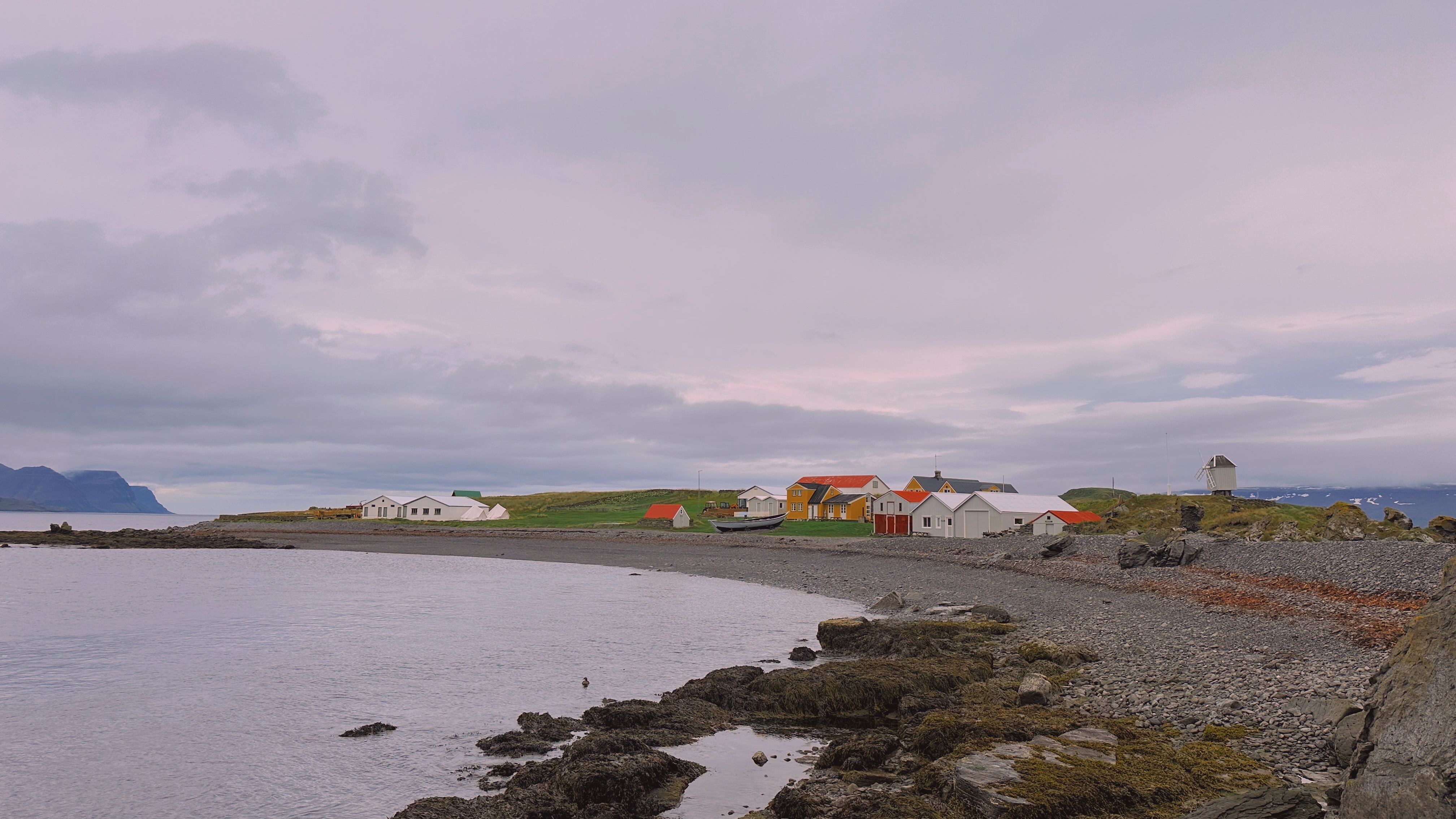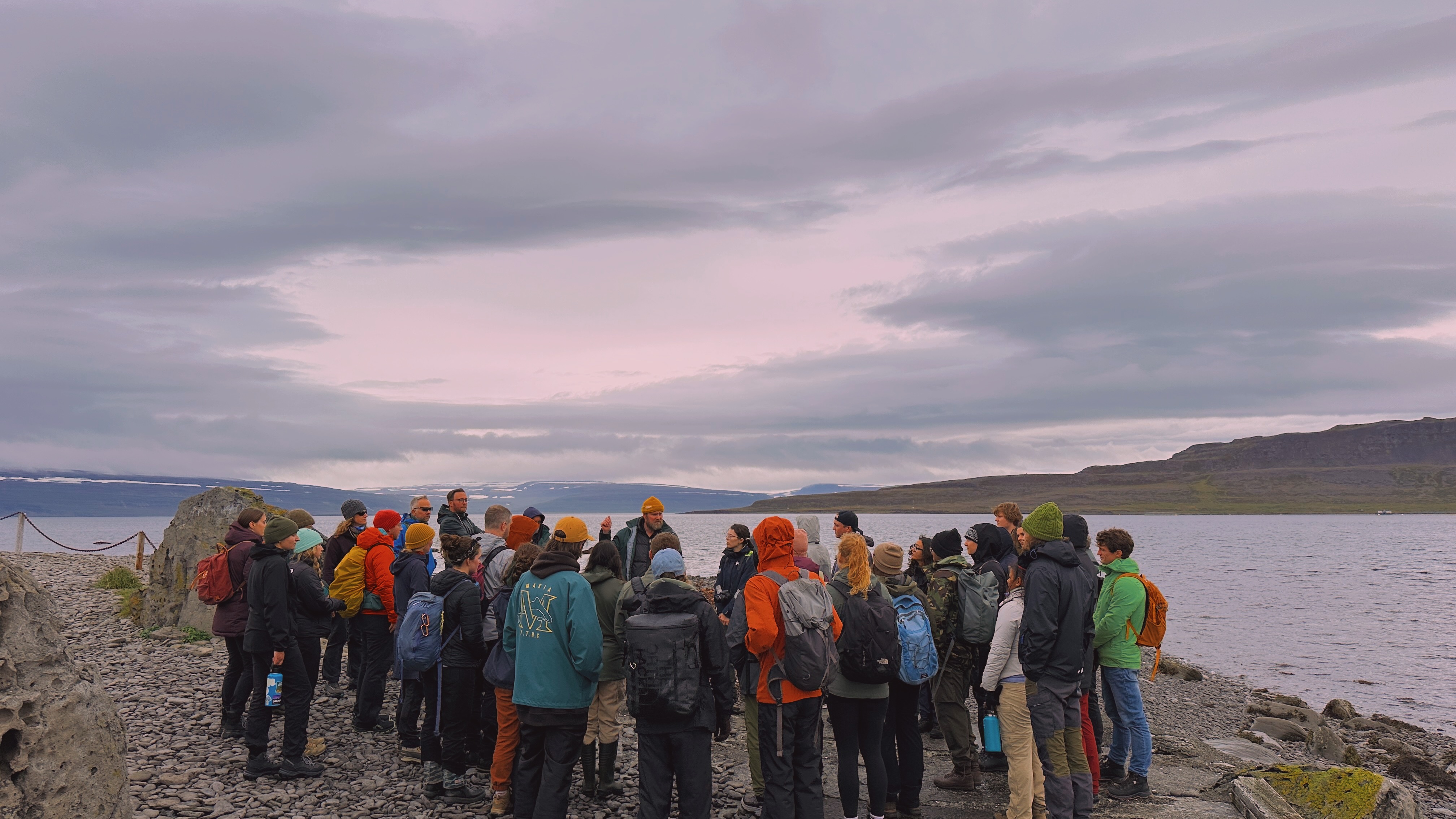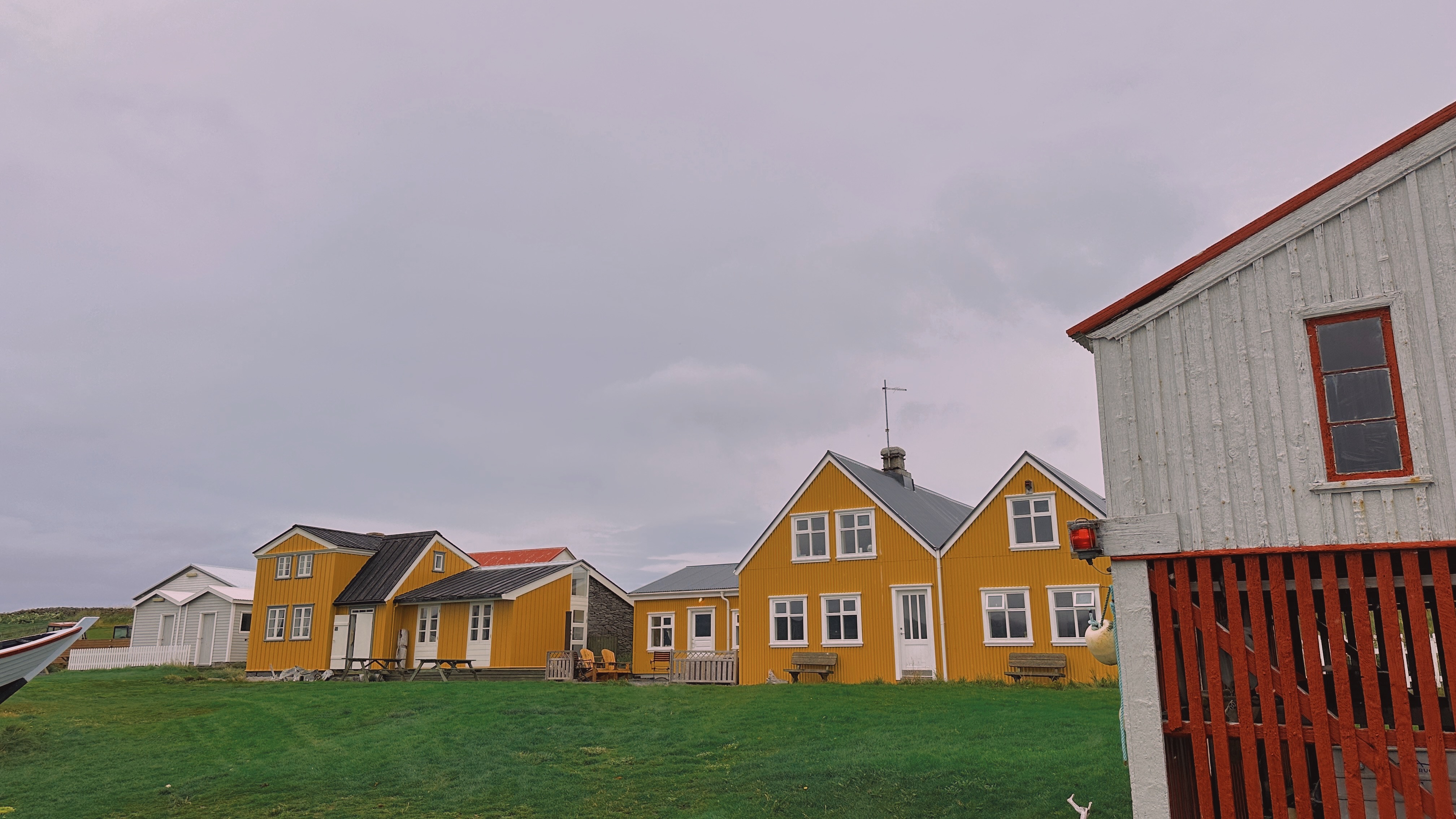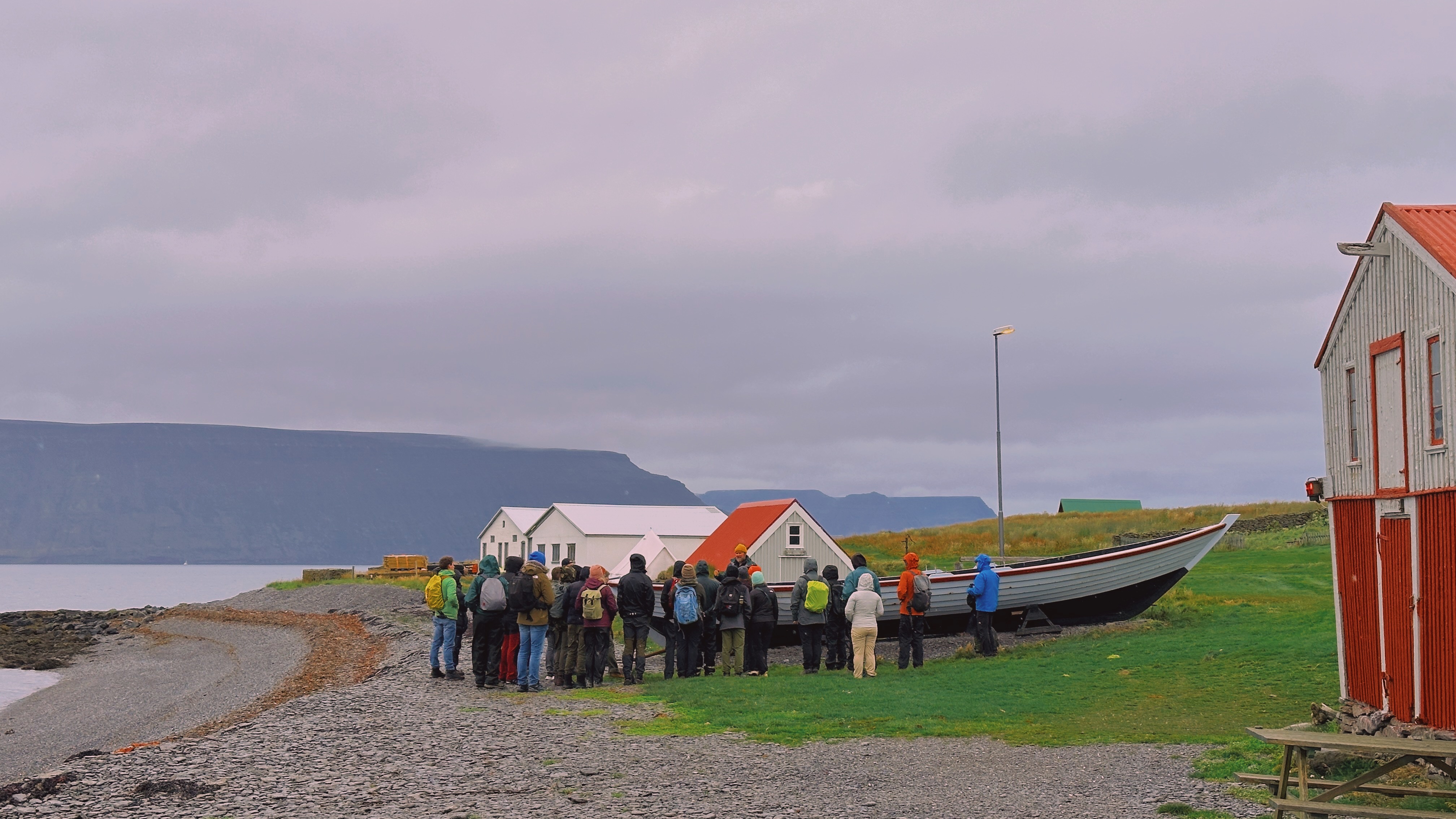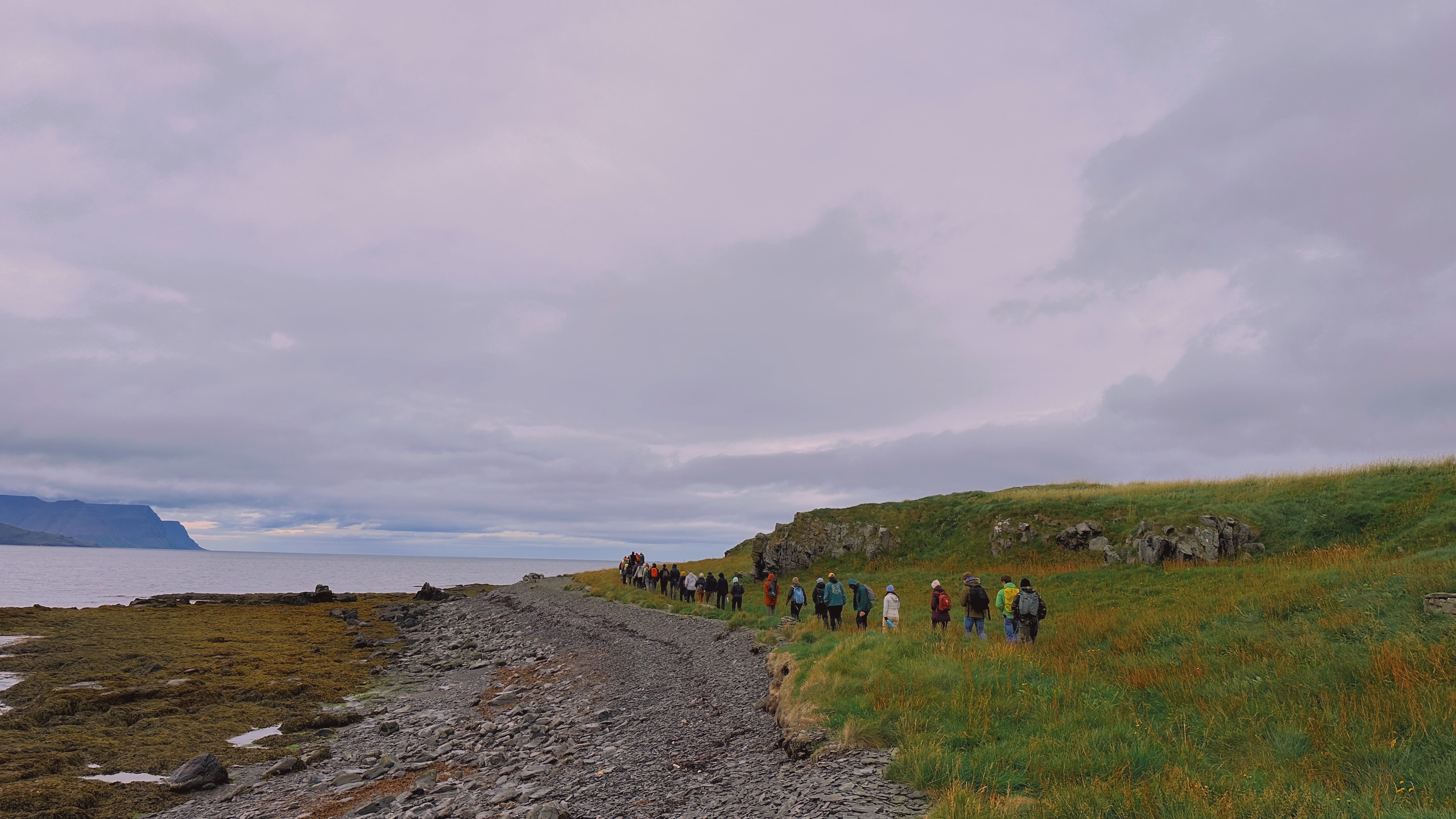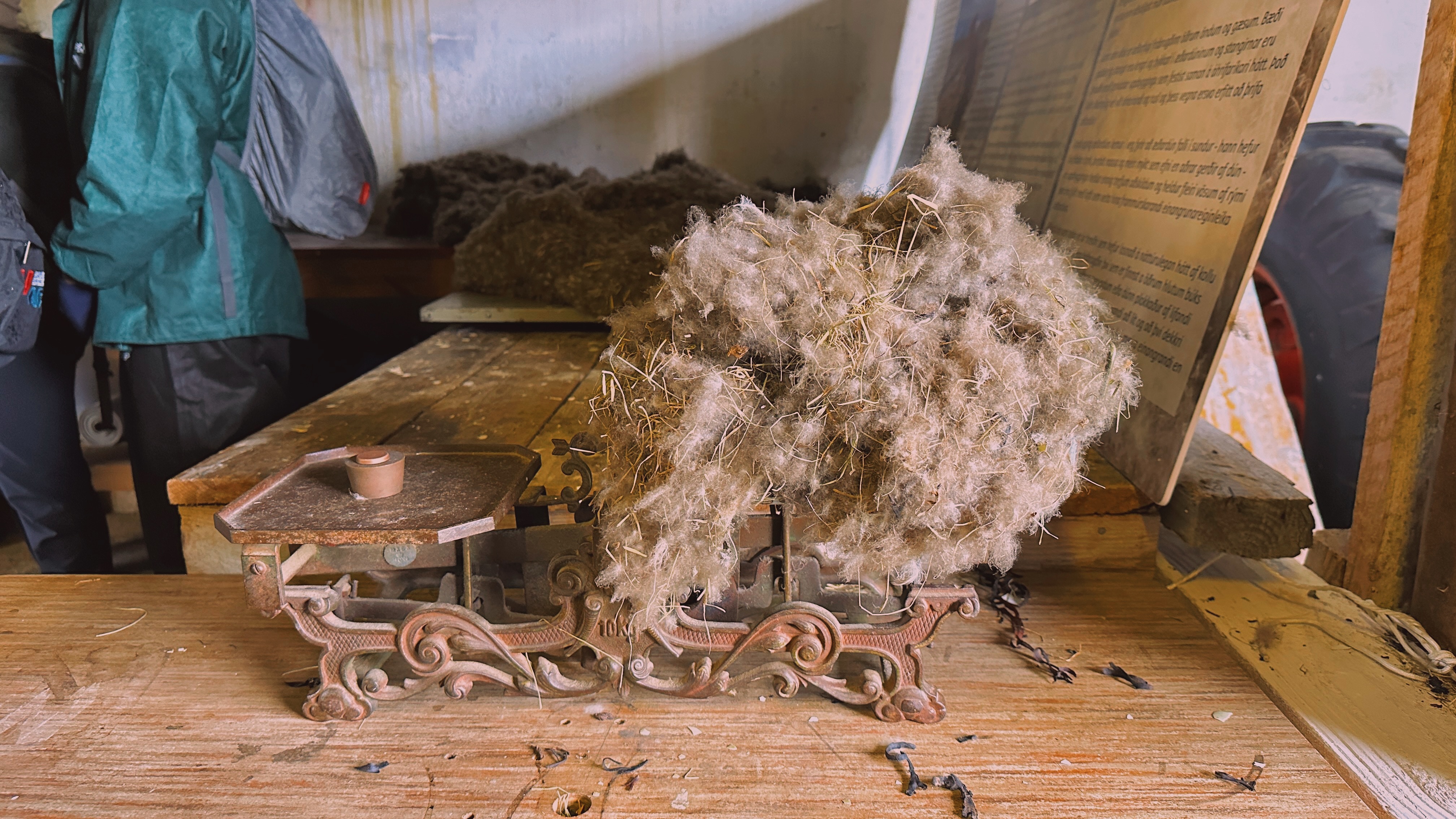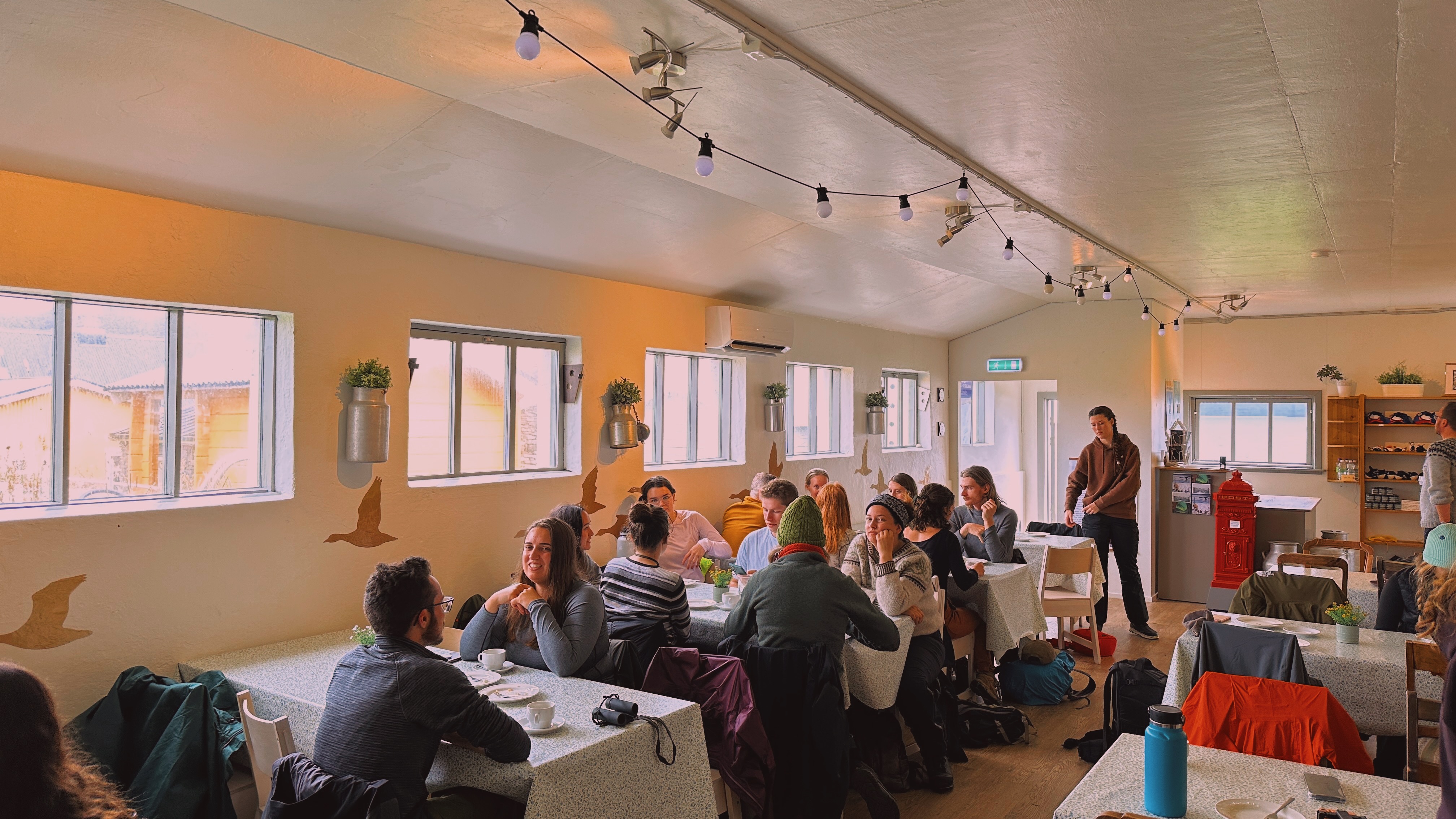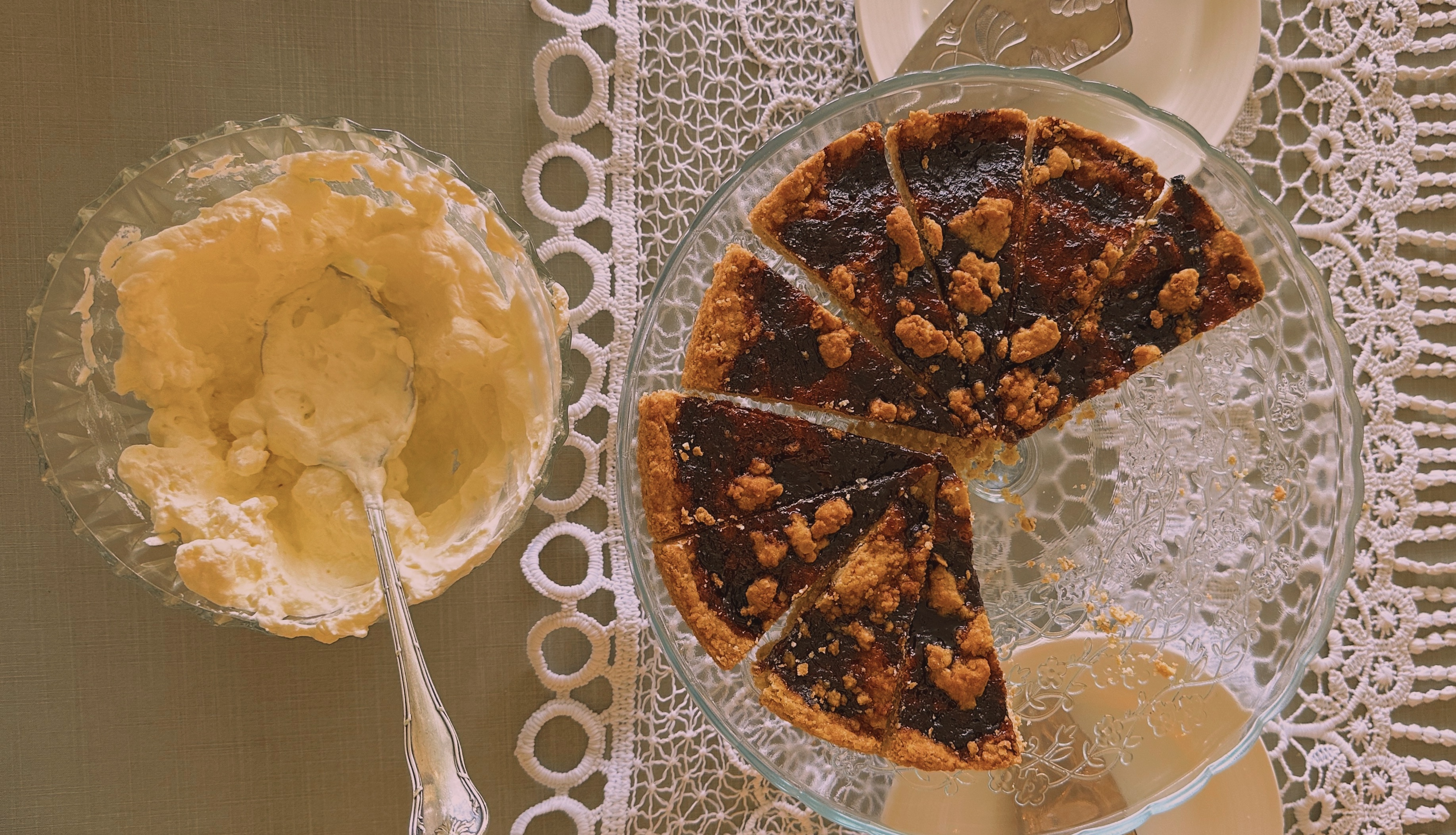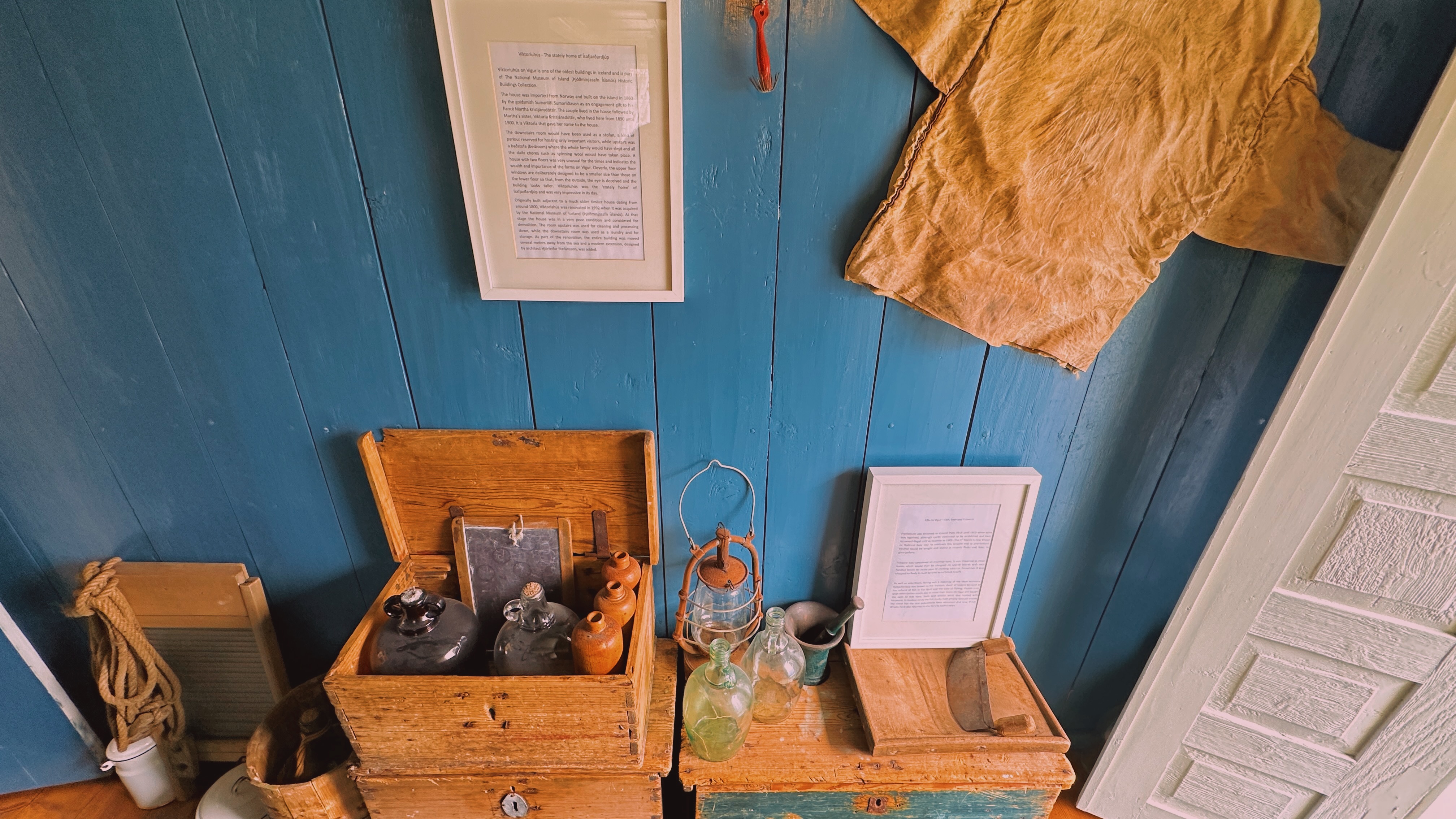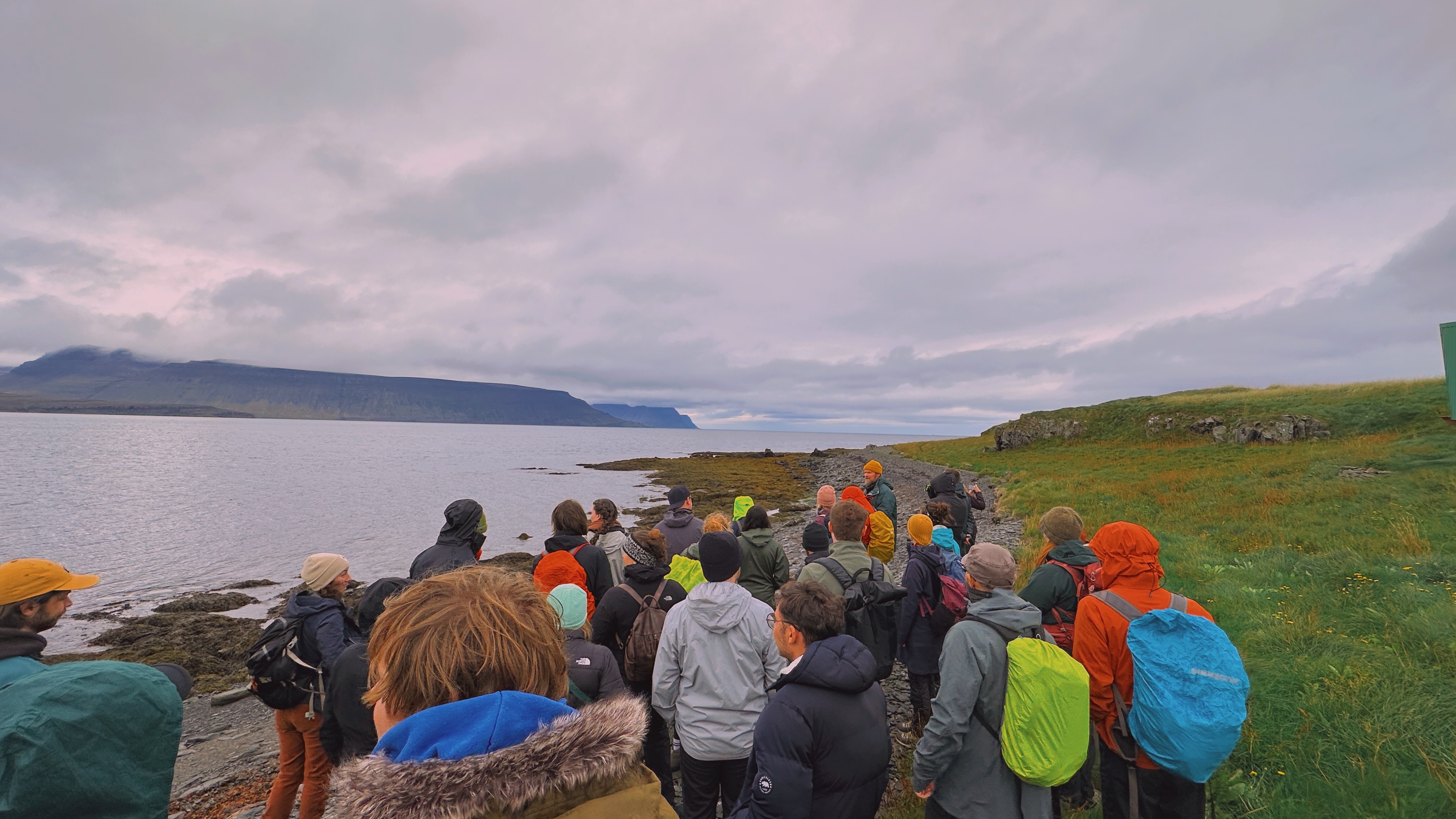Orientation trip to Vigur Island for the new master's students
Last Saturday, the new UW master’s students went on a trip to Vigur Island, an Arctic island located in the northwest of Iceland, renowned for its importance as a habitat for birdlife and its eiderdown collection. The group consisted of UW master’s students from the Coastal Marine Management program and the Coastal Communities and Regional Development program. Also with them were master’s students from the Climate Change and Global Sustainability (CCGS) program at the School of International Training in Vermont. The CCGS students are spending a semester with us here at UW.
Upon arriving at Vigur, the students were greeted by the island's caretakers, Gísli and Felicity, who manage the island year-round. Gísli led the students on a tour of the island, where they learned about its unique history, which stretches back to Iceland's original settlement. Vigur's rich natural resources and its cultural influence on the surrounding fjord region have made it a cherished part of Icelandic heritage. The island is particularly known for its tradition of eiderdown farming and as a sanctuary for Arctic birdlife and seals.
During the tour, students explored the island’s historic landmarks, including Iceland's only windmill, its oldest working boat, and some of its oldest buildings. Vigur has been designated an internationally important seabird habitat, home to 7,000 breeding eider ducks, 100,000 puffins, Europe’s largest colony of black guillemots, and countless nesting Arctic terns. A seal colony thrives at the island’s southern end, and increasing numbers of whales can be seen in the surrounding fjord each year.
After their hike, Felicity welcomed the students back to the converted cow shed with refreshments. The trip was a perfect combination of scenic beauty and education, giving the students a deeper understanding of the island’s ecological and cultural significance.
Vigur is often referred to as a "slice of northern perfection," located just south of the Arctic Circle. It is a vital refuge for wildlife and a beloved capsule of Icelandic history. From May to September, visitors are welcomed to experience the eiderdown harvest, observe rare birdlife, and enjoy traditional Icelandic coffee and cake while taking in the stunning views. Guests can also send a postcard from Europe’s smallest post office, explore the heritage displays at Viktoríuhús, and buy souvenirs, with proceeds going toward the island’s protection.
Students left happy from the island and this trip certainly set the tone for the semester. We thank Gísli and Felicity for a wonderful trip to the island.
Here you can see photos from the trip:
